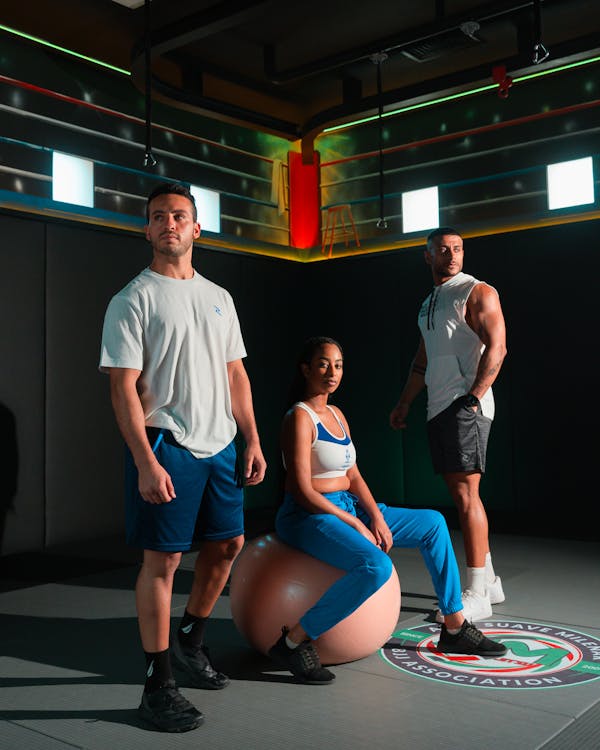The Evolution of Fitness: From Ancient Practices to Modern Workouts
The Evolution Of Fitness has undergone a significant transformation from its origins in ancient civilizations to its current manifestation in modern society. The journey of fitness reflects changing cultural values, scientific advancements, and societal needs. This article explores the evolution of fitness, highlighting key milestones and the factors that have shaped our understanding and approach to physical well-being.
Ancient Fitness Practices
Ancient Civilizations
1. Ancient Egypt and Mesopotamia:
- Physical fitness was essential for survival, as daily activities required strength and endurance.
- Soldiers and laborers needed to be physically fit for warfare and building projects.
2. Ancient Greece:
- Greeks placed a high value on physical fitness, linking it to overall well-being and intellectual prowess.
- The Olympics, originating around 776 BCE, celebrated physical achievements and promoted various sports like wrestling, running, and discus throwing.
3. Ancient Rome:
- Roman soldiers underwent rigorous training to prepare for combat, focusing on strength, endurance, and agility.
- Gladiators trained extensively, often under harsh conditions, to entertain in the arenas.
Medieval and Renaissance Fitness
Medieval Europe
- During the Middle Ages, fitness took a backseat due to social and economic turmoil.
- Physical training was primarily for knights, who needed to maintain combat readiness.
Renaissance Period
- The Renaissance revived interest in the human body and physical fitness.
- Scholars like Leonardo da Vinci studied human anatomy, emphasizing the importance of a healthy body for a healthy mind.
The Enlightenment and Industrial Era
Enlightenment (17th – 18th Century)
- The Enlightenment period saw a renewed focus on physical education, influenced by philosophers like John Locke and Jean-Jacques Rousseau.
- Schools began incorporating physical education into their curricula, promoting the idea that physical fitness was crucial for overall development.
Industrial Revolution (18th – 19th Century)
- The Industrial Revolution led to sedentary lifestyles as people moved to urban areas and worked in factories.
- This shift prompted a growing concern about the health impacts of inactivity.
- Gymnastics became popular in Europe, with figures like Friedrich Ludwig Jahn in Germany promoting physical exercise through gymnastics clubs.
20th Century Fitness Boom
Early 20th Century
- The early 1900s saw the establishment of the first fitness clubs and gymnasiums.
- World Wars I and II highlighted the importance of physical fitness for military readiness.
- Physical education programs were standardized in schools.
Mid-20th Century
- The 1950s and 60s marked the beginning of the modern fitness movement.
- Dr. Kenneth Cooper’s book “Aerobics” (1968) introduced the concept of aerobic exercise, emphasizing cardiovascular health.
- Jack LaLanne, known as the “Godfather of Fitness,” promoted physical fitness on television, encouraging millions to exercise regularly.
The Fitness Revolution
1970s – 1980s
- The 1970s and 80s saw a fitness revolution, driven by the popularity of jogging, aerobics, and bodybuilding.
- The publication of Jim Fixx’s “The Complete Book of Running” (1977) sparked a running craze.
- Jane Fonda’s aerobic workout videos became a cultural phenomenon, making fitness accessible to the masses.
- The bodybuilding movement, led by figures like Arnold Schwarzenegger, gained mainstream attention through competitions like Mr. Olympia and the documentary “Pumping Iron” (1977).
Modern Fitness Trends
1990s – Early 2000s
- The 1990s and early 2000s introduced diverse fitness trends, including step aerobics, spinning classes, and yoga.
- Fitness became more inclusive, with a focus on overall health and wellness rather than just aesthetics.
Digital Fitness Era (2010s – Present)
- The rise of technology has significantly impacted fitness, making workouts more accessible and personalized.
- Fitness apps and wearable technology allow individuals to track their progress and access workout plans from anywhere.
- Online fitness influencers and virtual classes provide motivation and guidance, catering to various fitness levels and interests.
- Functional fitness and high-intensity interval training (HIIT) have gained popularity for their efficiency and effectiveness.
- There has been a growing emphasis on mental health, with practices like mindfulness and meditation integrated into fitness routines.
The Future of Fitness
Personalized Fitness
- Advances in genetic testing and AI will enable more personalized fitness plans tailored to individual needs and goals.
- Wearable technology will continue to evolve, providing real-time feedback and monitoring to optimize workouts.
Holistic Health
- The future of fitness will likely embrace a more holistic approach, integrating physical, mental, and emotional well-being.
- Wellness programs will focus on overall lifestyle changes, including nutrition, sleep, and stress management.
Community and Inclusivity
- Fitness communities, both online and offline, will continue to grow, offering support and accountability.
- Inclusivity will be a key focus, ensuring fitness is accessible to people of all ages, abilities, and backgrounds.
Key Takeaways
- Ancient Roots: Fitness has always been essential for survival, from ancient civilizations to modern society.
- Cultural Shifts: The importance of physical fitness has been influenced by cultural, social, and economic changes throughout history.
- Modern Revolution: The 20th century saw a significant shift in the fitness industry, with the introduction of aerobic exercise, bodybuilding, and the popularization of fitness culture.
- Digital Age: Technology has transformed the fitness landscape, making workouts more accessible and personalized.
- Future Trends: Personalized fitness, holistic health, and inclusivity will shape the future of fitness, ensuring it remains an integral part of our lives.
Conclusion
The evolution of fitness reflects humanity’s enduring pursuit of health, strength, and well-being. From the physical prowess of ancient warriors to the sophisticated, tech-driven workouts of today, fitness has continuously adapted to meet the needs of society. As we look to the future, the focus will likely expand beyond physical fitness to encompass a more holistic approach, integrating mental and emotional well-being into our fitness routines. By learning from the past and embracing new innovations, we can continue to evolve our approach to fitness, ensuring it remains a vital and enriching part of our lives.

